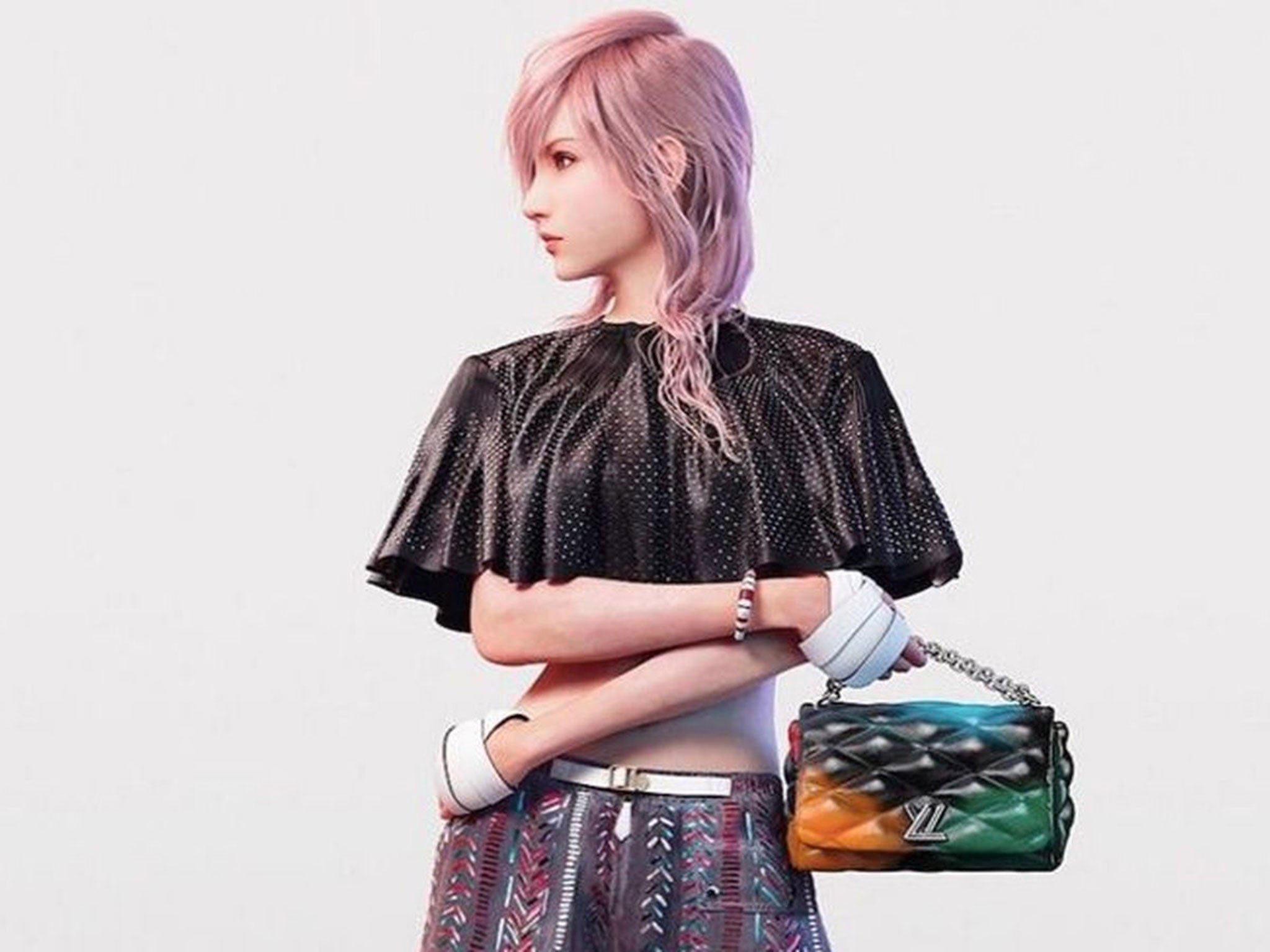Final Fantasy's Lightning is the star of Louis Vuitton's new advertising campaign
Louis Vuitton's new campaign star is instantly recognised and idolised the world over. But she isn't an actor or a supermodel – she's the first computer-game character to become a high-fashion heroine. How very 2016, says Alexander Fury

The festive period is a rare moment of respite in fashion's relentless schedule: the only comparable time is August, when many European factories traditionally down tools, thus preventing the pinrest of the industry from doing much at all. Nevertheless, this week, Louis Vuitton's Nicolas Ghesquière decided to (unofficially) unveil the world-famous, internationally recognised star of his spring/summer 2016 advertising campaign, via a short video and series of posts to his personal Instagram account. A sneak preview.
So what? It's hardly unique – indeed, it's become commonplace for fashion houses to "leak" high-profile campaigns such as this. Why should I – or, more importantly, you – be interested in Louis Vuitton's?
How about the fact that said star is a clump of pixels, named Lightning – a character from the Final Fantasy computer game series? Haven't heard that one before, have you?
On the one hand, it's a reasonable choice. Lightning is wildly popular: voted best-liked female Final Fantasy character in a 2013 poll by the game's developers, Square Enix, and in 2011 she came first in a Microsoft poll to determine the most popular character of the Final Fantasy XIII game. She's kind of the computer game equivalent of Michelle Williams, another Vuitton campaign star. And Lightning's fan base is especially massive in Japan, an important market for Louis Vuitton and the second-largest luxury market in the world, according to the consulting firm Bain & Company's oft-quoted 2015 worldwide report.
Fashion News in Pictures
Show all 22But Lightning is, nevertheless, a computer game character. Which makes this campaign quite remarkable. It's the first time I can think of that a fictional entity has fronted a major fashion house's advertising campaign in place of a living, breathing model. And it also runs counter to fashion's current fad for unretouched, warts-and-all realism – CR Fashion Book was the most recent, proudly boasting of its autumn/winter 2015 cover story that featured Lady Gaga, but no Photoshop.
Although unusual, the choice makes sense for Vuitton creatively. Ghesquière's spring/summer collection was inspired by Japanese anime and the digiscapes of Minecraft, Final Fantasy and Second Life. To me, there was also a touch of Lara Croft's Tomb Raider to Ghesquière's patched combat trousers and ferocious metal-studded leather accessories, brandished like weapons by the models – but Lara Croft seems like a different world, a world that needed Angelina Jolie to bring her into three dimensions. Vuitton and Lightning need nothing of the sort: they enlisted the help of video-game artist, designer and director Tetsuya Normura (the main character designer of the latest Final Fantasy instalment) to bring her to "life". And she does indeed wield those tasselled and logoed Vuitton handbags like cudgels.
The images are accompanied by a short video featuring Lightning in the opening look of Ghesquière's show, originally worn by model Fernanda Ly – whose trademark pink hair, in retrospect, bears a striking resemblance to Lightning's own. The brand's bold choice for its Christmas windows (all 436 of them) was a "digital girl", a glistening chrome mannequin that looks like a cross between the shiny-helmeted get-ups of the Daft Punk musicians and a tree bauble. Vuitton is forward-thinking.
That's worth remarking on – especially at a time when houses are anxiously looking backwards, trying to entrench themselves in generations-old traditions of European luxury. Nostalgia is an easy sell, after all – far easier than this tough, techy stuff. Vuitton has more than its fair share of history – there's an exhibition ongoing at the Grand Palais in Paris that charts the history and development of the label since its establishment in 1854. Ghesquière has done his fair share of delving into the company's archives; he has even popularised a bag that's a downsized version of a Vuitton trunk. I guess now he feels it's time to move on to somewhere new.
Ultimately, that's what I find refreshing and noteworthy about these images, especially in the context of Louis Vuitton. They feel new, exciting, even a little unsettling – it's all a bit sci-fi, a bit AI, to have computer-generated images modelling our fashion. For all the creative backup of Ghesquière's influences and inspriations, this advertising campaign feels like a brave choice. In fact, perhaps this is a brave choice because of that creative backup, because these images tie so perfectly to the rather abstract concept of Ghesquière's Vuitton collection, as opposed to, say, just sticking a disconnected but instantly recognisable celebrity in the clothes – or, more likely, behind the handbag. There's a synergy to the creative and commercial here that's quite exceptional.
It remains to be seen if it will pan out across advertising campaigns internationally, or if this is an interesting but ultimately pointless aesthetic cul-de-sac, a precursor to a more conventional approach when the actual advertising hits magazines and billboards. I hope not.
Subscribe to Independent Premium to bookmark this article
Want to bookmark your favourite articles and stories to read or reference later? Start your Independent Premium subscription today.

Join our commenting forum
Join thought-provoking conversations, follow other Independent readers and see their replies